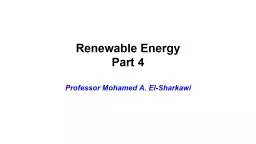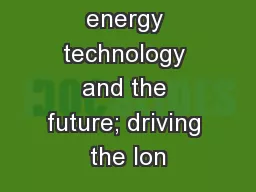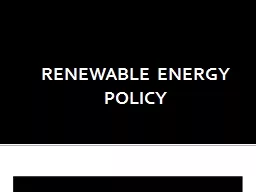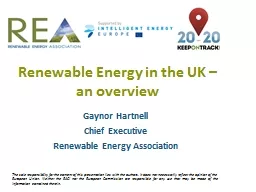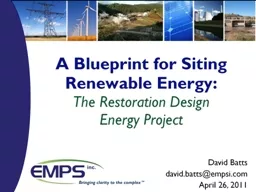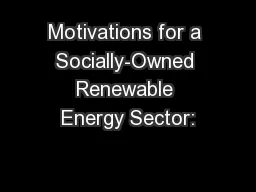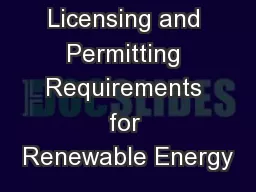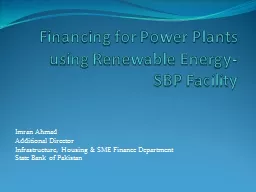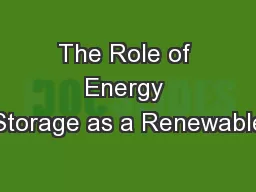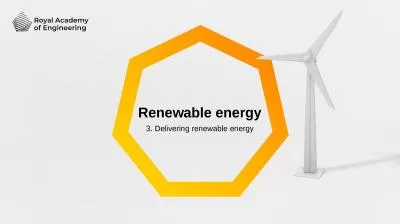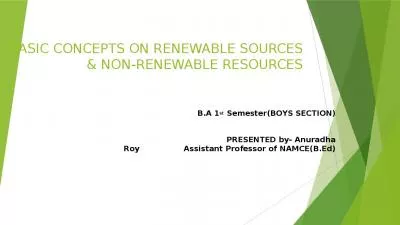PPT-Renewable Energy Part 4 Professor Mohamed A. El-Sharkawi
Author : debby-jeon | Published Date : 2019-06-29
Hydrokinetic Energy Types Small hydroelectric system Barrage System Water stream System Wave System Types of small hydro systems ReservoirType DiversionType ReservoirType
Presentation Embed Code
Download Presentation
Download Presentation The PPT/PDF document "Renewable Energy Part 4 Professor Mohame..." is the property of its rightful owner. Permission is granted to download and print the materials on this website for personal, non-commercial use only, and to display it on your personal computer provided you do not modify the materials and that you retain all copyright notices contained in the materials. By downloading content from our website, you accept the terms of this agreement.
Renewable Energy Part 4 Professor Mohamed A. El-Sharkawi: Transcript
Download Rules Of Document
"Renewable Energy Part 4 Professor Mohamed A. El-Sharkawi"The content belongs to its owner. You may download and print it for personal use, without modification, and keep all copyright notices. By downloading, you agree to these terms.
Related Documents

